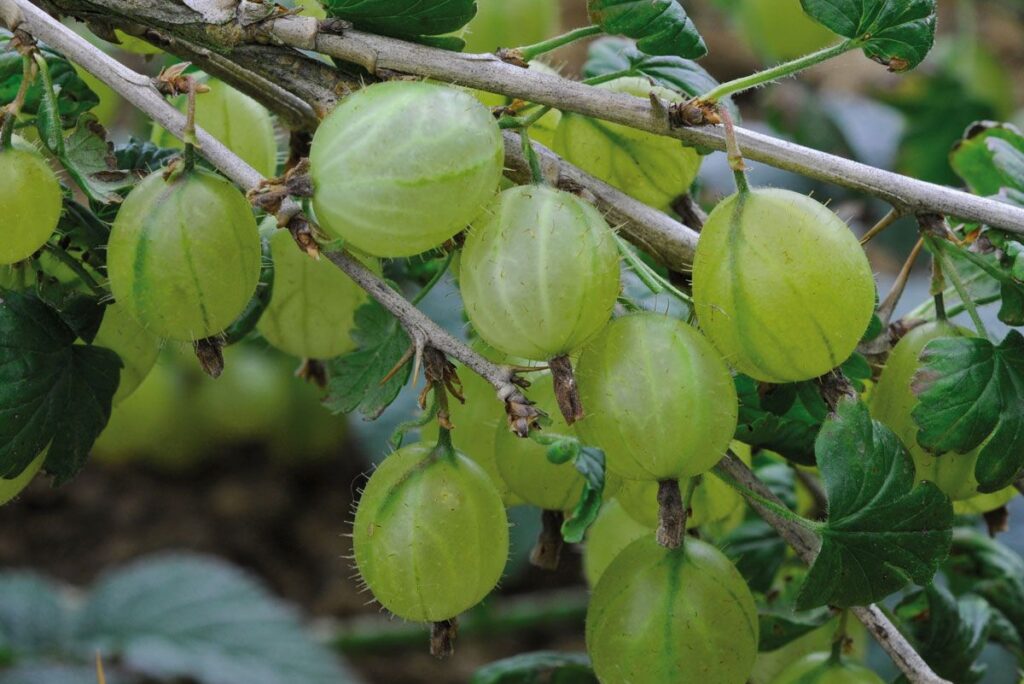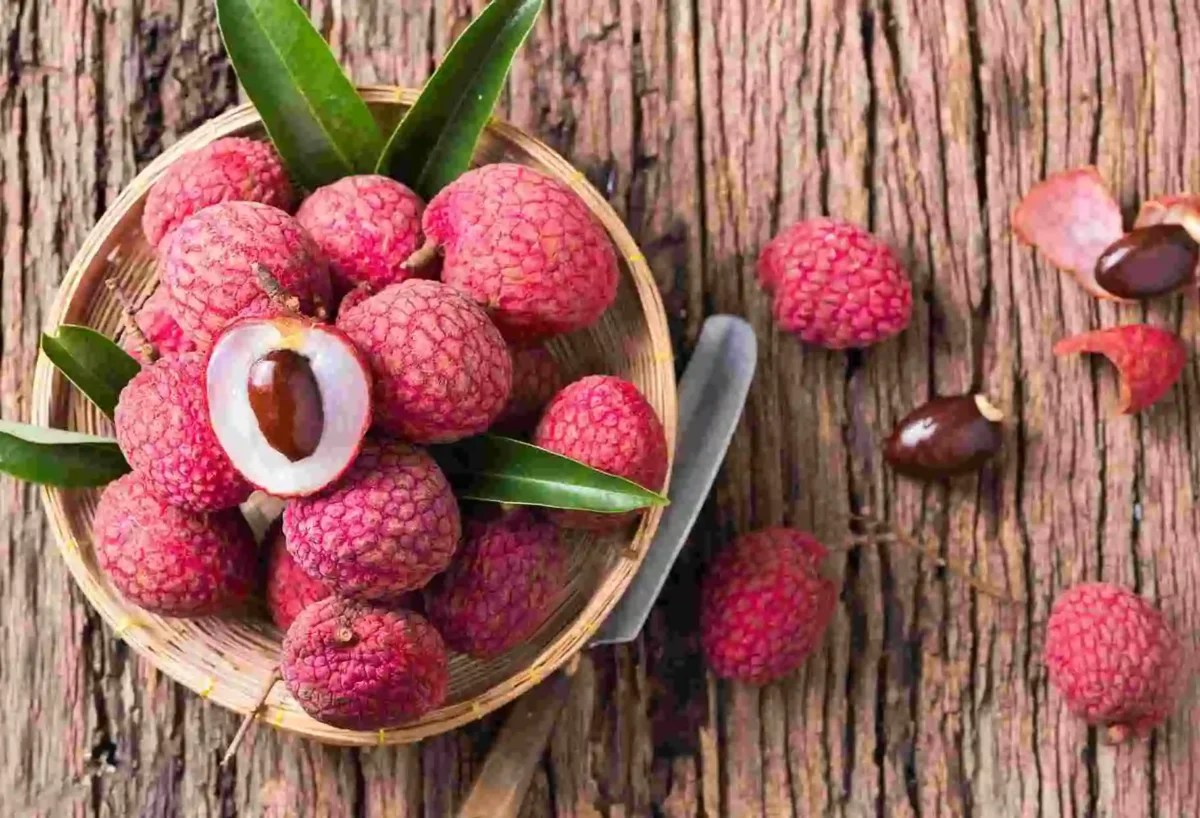Gooseberries are a type of small, tart fruit that belongs to the Ribes family. They are native to Europe, Asia, North America & have been cultivated for centuries for their delicious flavor & nutritional value.
One interesting fact about gooseberry is that they have a long history of medicinal use. In traditional herbal medicine, gooseberries were used to treat a variety of ailments, including sore throats, diarrhea & even scurvy. Today, modern research has shown that gooseberries are rich source of antioxidants & other nutrients that can have a number of health benefits.
The purpose of this post is to introduce readers to the world of gooseberry and highlight some of the reasons why they should be a part of our diet. We will delve into the nutritional value of gooseberries & discuss how they can be incorporated into meals & snacks. We will also provide tips on how to grow your own gooseberry plants and incorporate them in to your home garden.
So, whether you are a seasoned gardener or simply looking to add some new & tasty fruits to your diet, this post is for you. Let’s explore the benefits of gooseberries and discover why this overlooked fruit is worth a second look.
Table of Contents
Nutritional value of gooseberries
Gooseberries are small, tart fruit that is often overlooked in favor of more well-known fruits like apples and berries. However, despite their relatively small size, gooseberries pack a punch when it comes to nutrition.
One of the key nutrients found in gooseberries is vitamin C. This essential vitamin is known for its role in supporting immune function and a single serving of gooseberries provides around 25% of the daily recommended intake. Gooseberries also contain small amounts of other important vitamins and minerals, including vitamin A, potassium & iron.
In addition to these vitamins and minerals, gooseberries are also a rich source of antioxidants. These compounds help to protect the body against the harmful effects of free radicals, which are unstable molecules that can cause damage to cells & contribute to the development of chronic diseases like heart disease and cancer.
Health benefits of eating Gooseberry
Gooseberry pack a punch when it comes to nutrition and have a long history of use in traditional medicine for their health-promoting properties. Here is a list of some of the potential health benefits of eating gooseberries:
- Boost immune function: Gooseberries are rich source of vitamin C which is known for its role in supporting immune function. Consuming gooseberries may help to boost the body’s immune system and protect against illness and infection.
- Improve heart health: Gooseberries contain antioxidants & other compounds that may help to reduce inflammation and improve heart health. Some studies have suggested that consuming gooseberries may help to lower blood pressure, reduce cholesterol levels & improve blood flow to the heart.
- Reduce the risk of certain diseases: The antioxidant and anti-inflammatory properties of gooseberries may help to reduce the risk of certain diseases, such as heart disease & cancer. Some research has suggested that, consuming gooseberries may help to reduce the risk of breast cancer and other types of cancer. Although more research is needed to confirm these findings.
- Support digestion: Gooseberries are high in fiber which is important for healthy digestion. Consuming gooseberry may helps to reduce constipation, prevent digestion & improve bowel movement.
It’s worth noting that the research on the health benefits of gooseberries is still in its early stages and more studies are needed to fully understand the extent of their potential health benefits. However, the available evidence suggests that adding gooseberries to your diet could be tasty & healthy way to support your overall wellbeing.
Also Read: Discover the amazing health benefits of watermelon seeds and Its Uses!
How to incorporate gooseberries into your diet?
Gooseberries may not be as well-known as other types of fruit, but they are a delicious and versatile ingredient that can be incorporated into a variety of meals and snacks. Here are some ideas for how to add gooseberry to your diet:
- Smoothies: Gooseberries are a great addition to smoothies because they add a tart, tangy flavor that balances out sweeter ingredients like berries and bananas. Simply add a handful of gooseberries to your favorite smoothie recipe or try a recipe specifically designed to highlight their flavors such as this Gooseberry, Mango & Banana Smoothie.
- Desserts: Gooseberries are a natural fit for sweet treats like pies, crisps and cobblers. They also make a delicious filling for tarts or tartlets. For a simple and delicious dessert, try making a gooseberry compote by simmering fresh or frozen gooseberries with a little sugar and a splash of water until they are soft and thickened. Serve the compote over ice cream, yogurt or pound cake for a tasty treat.
- Sauces and jams: Gooseberries are a great fruit for making jams and preserves because their tart flavor pairs well with sugar and other sweeteners. They also make a delicious savory sauce when combined with vinegar, mustard, and herbs. Try using gooseberry sauce as a condiment for grilled meat or fish or use it to add flavor to sandwiches and salads.
- Substitutes: If you can’t find fresh gooseberries or if they are not in season, you can use frozen gooseberries in many recipes. They can also be used as substitute for other tart fruits like cranberries or currants in recipes. Just keep in mind that gooseberries are a little smaller and tarter than these other fruits, so you may need to adjust the amount of sugar or other sweeteners you use accordingly.
Frozen Gooseberries
Frozen gooseberries are gooseberries that have been harvested at their peak of ripeness and then frozen to preserve their flavor and nutrients. Frozen gooseberries are convenient way to enjoy this tart and flavorful fruit year-round, and can be used in a variety of dishes and recipes.
To use frozen gooseberries, simply remove them from the freezer and allow them to thaw to room temperature. They can be used in place of fresh gooseberries in any recipe, or can be eaten as a snack on their own. Frozen gooseberries can be used in smoothies, pies, jams, and other desserts, or can be cooked into savory dishes such as sauces or chutneys. They can also be used to add flavor and nutrition to oatmeal, yogurt & other breakfast foods.
Frozen gooseberries are a good source of vitamins, minerals, and antioxidants, and can be a healthy and convenient addition to your diet. Just be sure to follow proper food safety guidelines when handling and storing frozen foods, and check the label for any additional ingredients or processing methods that may have been used.
Dried Gooseberry
Dried gooseberries are gooseberries that have been dehydrated and preserved through drying process. They are a concentrated source of nutrients and have a chewy, sweet & slightly tart flavor. Dried gooseberries can be convenient and tasty way to add flavor and nutrition to your diet.
To use dried gooseberries, simply rehydrate them by soaking them in water or other liquid for a few hours or overnight. They can then be used in place of fresh gooseberries in any recipe or can be eaten as a snack on their own. Dried gooseberries can be added to granola, trail mix or other snacks or can be used in baking and cooking to add flavor and nutrition to dishes such as pies, jams & chutneys. They can also be used to add flavor and texture to smoothies and other beverages.
Dried gooseberries are a good source of vitamins, minerals, and antioxidants, and can be a healthy and convenient addition to your diet. Just be sure to check the label for any additional ingredients or processing methods that may have been used & store them in a cool, dry place to preserve their quality.
Gooseberry Powder and its benefits
Gooseberry powder is a concentrated form of gooseberries that has been ground into a fine powder. It is made by drying and grinding whole gooseberries into a powder, which preserves the fruit’s nutrients and flavor. Gooseberry powder is a convenient and easy way to add the benefits of gooseberries to your diet.
Gooseberry powder is a rich source of antioxidants, vitamins, and minerals, and has many potential health benefits. Some research suggests that consuming gooseberry powder may help to support immune function, improve heart health, reduce the risk of certain diseases & support healthy digestion. Gooseberry powder is also believed to have anti-inflammatory and anti-aging properties and may help to improve skin health and reduce the appearance of wrinkles and other signs of aging.
To use gooseberry powder, simply mix it into a smoothie, juice, or other beverage or add it to recipes such as baked goods, jams, or chutneys. It can also be taken as a supplement in capsule form. Just be sure to check the label for any additional ingredients or processing methods that may have been used, and consult with a healthcare provider before adding any new supplement to your diet.
Overall, there are many delicious and creative ways to incorporate gooseberries into your diet. Whether you are looking for a sweet treat or a savory condiment, this overlooked fruit is sure to add some excitement to your meals.
Also Read: 10 Surprising Health Benefits of Eating Nuts and Seeds
How to grow gooseberries?
Growing gooseberries are hardy and relatively easy-to-grow fruit that can thrive in a variety of climates. With proper care, these plants can produce a bountiful harvest of sweet and tart fruit for many years. Here are some tips for growing gooseberries in your home garden:
- Soil and sunlight: Gooseberry prefer well-draining, slightly acidic soil with a pH of around 6.0 to 6.5. They also need plenty of sunlight to thrive, so choose a sunny spot in your garden or consider planting them in a container that can be moved to a sunny location.
- Watering: Gooseberries have moderate water needs and should be watered regularly to keep the soil evenly moist, but not waterlogged. Avoid letting the soil dry out completely, as this can cause the fruit to become bitter.
- Propagation: Gooseberry plants can be propagated by rooting softwood cuttings taken in the spring or by layering a low-lying branch. They can also be grown from seeds, although this method is more challenging and may take longer to produce fruit.
- Pruning: Proper pruning is important for maintaining healthy gooseberry plants and promoting fruit production. Prune out any dead or damaged branches, and thin out the center of the plant to encourage air circulation and prevent fungal diseases.
- Pest control: Gooseberries are relatively pest-resistant, but they can be vulnerable to pests like aphids and cane borers. Keep an eye out for these pests and take steps to control them if necessary. This can include using insecticidal soap or horticultural oil, or removing affected branches and destroying them.
By following these tips, you should be able to successfully grow your own gooseberry plants and enjoy the fruits of your labor for many seasons to come. As with any new gardening project, it may take a little trial and error to find the best techniques & methods for your specific growing conditions. However, with a little patience and persistence, you can reap the rewards of a thriving gooseberry patch.
Also Read: Healthy Diet: Its Importance and Awareness
Types of Gooseberry
Gooseberries are a type of small, tart fruit that belongs to the Ribes family. There are many different varieties of gooseberries, each with its own unique flavor and characteristics. Here are some of the most common types of gooseberries:
American gooseberries
American gooseberries are native to North America and are known for their sweet and tart flavor. They are typically smaller and rounder than European gooseberries and come in a variety of colors, including red, yellow, green & black.
European gooseberries
European gooseberries are native to Europe and are slightly larger and more elongated in shape than American varieties. They are typically tarter than American gooseberries and are often used in cooking and preserving.
Red gooseberries
Red gooseberries are a popular variety that is known for their sweet, juicy flavor and vibrant red color. They are often used in desserts and other sweet dishes & can also be eaten fresh as a snack.
Green gooseberries
Green gooseberries are a tart variety that is often used in cooking and preserving. They have a firm, crisp texture and are typically smaller and more elongated in shape than red varieties.
Cape gooseberry
Cape gooseberry is a common name for the fruit known scientifically as Physalis peruviana. It is also called yellow gooseberry or golden gooseberry. This small, round fruit is native to South America and has a papery husk that covers the fruit and gives it a lantern-like appearance. Cape gooseberry has a sweet and tangy flavor, and is often used in desserts, jams, and other sweet dishes. It is also known for its high vitamin C content and other nutritional benefits. Cape gooseberry plants are easy to grow and are often cultivated in home gardens or as a potted plant. They are also widely available at farmers markets and specialty stores.
Indian gooseberries
Indian gooseberries also known as amla or amalaki, are small, round fruits with a greenish-yellow or greenish-gray color. Indian gooseberry is known scientifically as Phyllanthus Emblica. from the plant family (the Actinidiaceae family). They are very sour and stringent and are often used in Ayurvedic preparations to support digestive health and balance the body’s doshas (energies). Indian gooseberries are also a rich source of antioxidants, vitamin C, and other nutrients that are believed to support overall health and well-being.
Chinese gooseberries
Chinese gooseberries also known as kiwi fruit are small, fuzzy fruit that is native to China. Chinese gooseberry is known scientifically as Phyllanthus Emblica. from the plant family (the Actinidiaceae family). They are oval in shape and have green or brown skin, with bright green or yellow flesh. Chinese gooseberries are sweet and juicy and are a good source of vitamin C and other nutrients. They are often used in salads, desserts & other dishes and can also be eaten fresh as a snack.
There are many other varieties of gooseberries available, each with its own unique flavor and characteristics. Whether you prefer sweet or tart flavors, there is a gooseberry variety to suit your taste.
Also Read : Healthy Sunflower Seeds: Types, Usages & Health Benefits
Gooseberry side effects
Gooseberries are a rich source of vitamins, minerals, and antioxidants & have been traditionally used for their medicinal properties. However, like any food, it is important to be aware of any potential side effects or interactions that may occur when consuming gooseberries. Here are some things to consider when it comes to gooseberry side effects:
- Allergic reactions: Some people may be allergic to gooseberries or other members of the Ribes family, such as currants or blackberries. Symptoms of an allergic reaction to gooseberries may include hives, rash, itching, swelling, difficulty breathing or anaphylaxis. If you experience any of these symptoms after consuming gooseberries, seek medical attention immediately.
- Interactions with medications: Gooseberries contain compounds called tannins, which may interact with certain medications. For example, tannins may interfere with the absorption of certain antibiotics such as tetracycline. If you are taking any medications, it is important to consult with your healthcare provider before adding gooseberries in your diet.
- Stomach upset: Consuming large amounts of gooseberries may cause stomach upset, including nausea, vomiting, or diarrhea. If you experience these symptoms after eating gooseberries, reduce your intake & consider seeking medical attention if the symptoms persist.
It is important to note that these side effects are rare and are typically only seen when consuming large amounts of gooseberries. In general, gooseberry can be enjoyed as part of a healthy and varied diet when consumed in moderation. However, if you have any concerns or are pregnant, nursing, or have a medical condition, it is always best to consult with a healthcare provider before adding any new food to your diet.
Conclusion:
In conclusion, gooseberries are a tasty and nutritious fruit that can be enjoyed in a variety of dishes and recipes. They are a rich source of vitamins, minerals and antioxidants & have the potential to support immune function, improve heart health and reduce the risk of certain diseases. Whether you are looking to add some new & interesting flavors to your diet or wanting to grow your own fruit at home, gooseberries are a great choice.
If you are inspired to try growing or using gooseberries in your own recipes, there are many resources available to help you get started. Consider checking out gardening books or websites for more detailed information on how to plant and care for gooseberry plants. You can also find a wide range of recipes featuring gooseberries online or in cookbooks.
Overall, incorporating gooseberries into your diet or garden is a simple and delicious way to boost your health & add some excitement to your meals. Give them a try and see for yourself the many benefits that this often-overlooked fruit has to offer.

Rupesh Sagvekar is Content writer, Food blogger and owner of Manvik Foods, an online shop in Mumbai, India that specializes in selling high-quality dry fruits, nuts, berries, whole and powdered spices. Under the authority of Manvik Enterprises Organisation, Rupesh and his team believe that quality is of the utmost importance. They take great care to ensure that their products are verified, tested, and of the best possible quality. Rupesh’s goal is to make sure that every customer is satisfied with what they receive from Manvik Foods.
As an Amazon affiliate, Manvik Foods ships their products all over India, allowing customers from all corners of the country to enjoy their delicious and nutritious products. With Rupesh at the helm, Manvik Foods has become known for their commitment to quality, exceptional customer service, and passion for healthy, natural foods.








